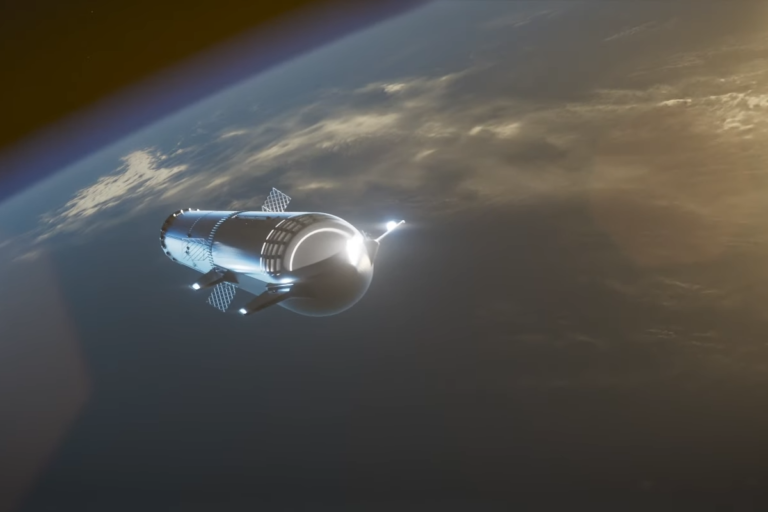
Introduction to Tesla’s New Electric Car
Tesla has once again made headlines in the automotive industry with the debut of its latest electric vehicle (EV), solidifying its reputation as a front-runner in the transition to sustainable transportation. As global interest in electric vehicles continues to surge, fueled by concerns over climate change and advancement in technology, Tesla remains at the forefront of this movement. The introduction of the new electric car model is not merely an enhancement of its existing lineup but represents a significant leap in efficiency and range, critical factors for potential EV buyers.
This revolutionary vehicle features a host of innovative technologies that address common limitations associated with electric cars, including range anxiety. With cutting-edge battery technology, this model promises an impressive driving range that can compete with traditional gasoline vehicles, making it a compelling choice for consumers. The high-efficiency electric powertrain further optimizes performance, providing an exhilarating driving experience while keeping energy consumption in check.
In addition to its remarkable range, Tesla’s new electric car boasts an array of safety and convenience features that further enhance its appeal. Advanced driver-assistance systems, seamless connectivity, and an intuitive user interface showcase Tesla’s commitment to providing a superior driving experience. The initial specifications indicate a powerful vehicle that meets the increasing demands of modern drivers, setting new benchmarks in the EV market.
This introduction lays the groundwork for a detailed exploration of the groundbreaking features and capabilities of Tesla’s latest offering, reflecting the company’s ongoing dedication to innovation in electric mobility. As we delve deeper into the specifications and engineering behind this new vehicle, it becomes evident that Tesla is not only shaping the future of automotive design but also paving the way for a more sustainable and efficient mode of transportation.
Record-Breaking Range: The Technical Innovations Behind It
The latest Tesla model has captivated attention with its record-breaking range, a feat made possible by a combination of pioneering technologies and meticulous design choices. At the heart of this achievement lies an advanced battery system that utilizes cutting-edge lithium-ion cells, specifically engineered for enhanced energy density and longevity. These cells not only store more energy but also contribute to a lighter overall battery pack, which is crucial for maximizing performance and range.
Moreover, Tesla’s engineers have focused on refining the powertrain design. The new electric car employs a highly efficient electric motor combined with sophisticated software algorithms that optimize energy use. This allows the vehicle to convert a higher percentage of battery power into usable energy, resulting in improved acceleration without compromising on range. One notable improvement is the use of regenerative braking, which harnesses energy during deceleration to replenish the battery, thus extending the vehicle’s driving capabilities.
Weight optimization has also played a pivotal role in achieving superior range figures. By employing lightweight materials, such as aluminum and high-strength steel, engineers have successfully reduced the overall mass of the vehicle. This reduction is significant because less weight translates directly to increased efficiency, enabling the vehicle to travel longer distances on a single charge. Additionally, these innovations minimize energy loss associated with vehicle inertia, further enhancing range performance.
Aerodynamic efficiency cannot be overlooked in this equation. With its streamlined design, the new Tesla drastically reduces drag coefficient, allowing the vehicle to slice through the air more effectively. Tesla’s engineers, led by insights from CEO Elon Musk, have reiterated the importance of aerodynamics as a cornerstone of range achievement, stating that every detail contributes to the overall efficiency of the car. Collectively, these technical innovations establish the new Tesla model as a leader in the electric vehicle market, setting a benchmark for future developments.
Environmental Impact and Sustainability
The launch of Tesla’s new electric car marks a significant advancement in the realm of electric vehicles (EVs), particularly concerning its extended range capabilities. This enhancement seeks to alleviate range anxiety, a prevalent concern among prospective EV buyers who fear being stranded without sufficient charging infrastructure. By offering a longer driving range, Tesla is effectively addressing these apprehensions, thereby promoting the widespread adoption of electric vehicles. The increase in adoption rates not only benefits individual consumers but also contributes positively to the environment by significantly reducing carbon emissions from transportation.
Furthermore, the extended range of Tesla’s new electric car plays a pivotal role in facilitating sustainable transportation solutions. As cities and countries worldwide strive to meet ambitious carbon reduction targets, having vehicles with a longer range eliminates one of the most significant barriers to transitioning from fossil fuel-powered cars to electric alternatives. The consequent decrease in reliance on gasoline or diesel vehicles translates directly to lower greenhouse gas emissions, which are critical in combatting global warming and achieving a greener future.
Tesla’s commitment to sustainability is evident not only in its vehicles but also in its operational practices. The company continuously invests in renewable energy sources and sustainable materials to construct its cars. For instance, efforts to integrate recycled materials and innovative battery technology that uses less harmful substances highlight its dedication to minimizing the environmental footprint of its products. This vehicle aligns seamlessly with global efforts to foster cleaner transportation solutions and promote a more sustainable way of living.
As consumers become increasingly aware of their carbon footprints and pursue greener alternatives, Tesla’s new electric car stands as a testament to the potential of electric vehicles to offer not just impressive performance but also a sustainable future for transportation. Its extended range capabilities may very well serve as a catalyst for a broader shift towards environmentally-conscious driving.
Market Competitiveness and Future Trends
The introduction of Tesla’s new electric car has positioned the company as a formidable contender in the ever-evolving electric vehicle (EV) market. With its groundbreaking range and efficiency, this model is set to challenge the status quo established by existing competitors such as Rivian, Lucid Motors, and traditional automotive giants like Ford and General Motors, which are increasingly investing in the electric vehicle sector. This new Tesla model boasts a range that surpasses most alternatives currently available, emphasizing the brand’s commitment to cutting-edge technology and innovation.
As we analyze the current offerings in the EV space, it is evident that while many competitors are enhancing their own vehicles’ range and performance, Tesla’s integrated approach—combining superior battery technology, software, and manufacturing capabilities—distinguishes it from others. Such advantages may allow Tesla to maintain a significant edge regarding both sustainability metrics and consumer appeal. However, challenges remain; increasing competition means that price pressures and innovation will intensify, compelling Tesla to stay ahead of the curve continually.
Looking toward the future, trends in consumer preferences suggest a growing demand for electric vehicles characterized by not only exceptional range but also affordability and sustainability. Regulatory changes, particularly in emissions standards and incentives for electric vehicle adoption, will substantially shape the market landscape. As governments worldwide impose stricter regulations to combat climate change, the need for efficient, zero-emission vehicles will only heighten.
Thus, the decision-making process for consumers will be increasingly influenced by factors such as charging infrastructure, total cost of ownership, and brand reputation. As Tesla adapts to these evolving trends and maintains its innovative spirit, it stands to gain further traction in the competitive electric vehicle market, shaping the future of sustainable transportation for years to come.




